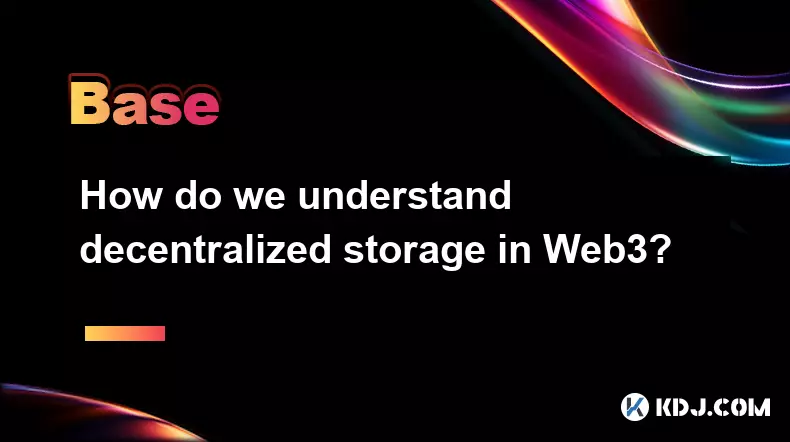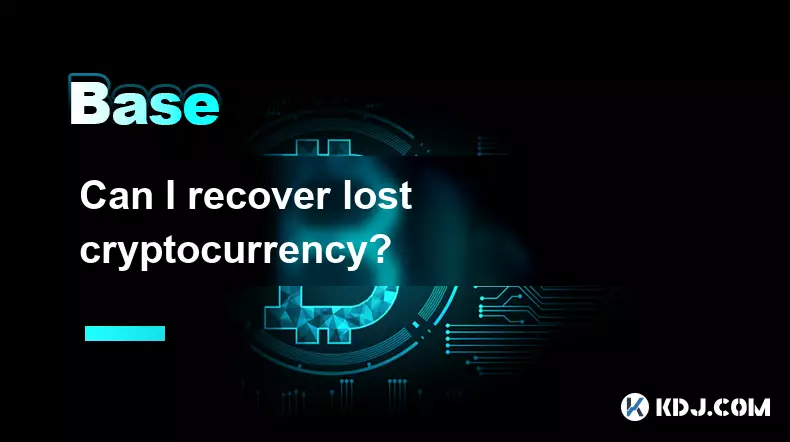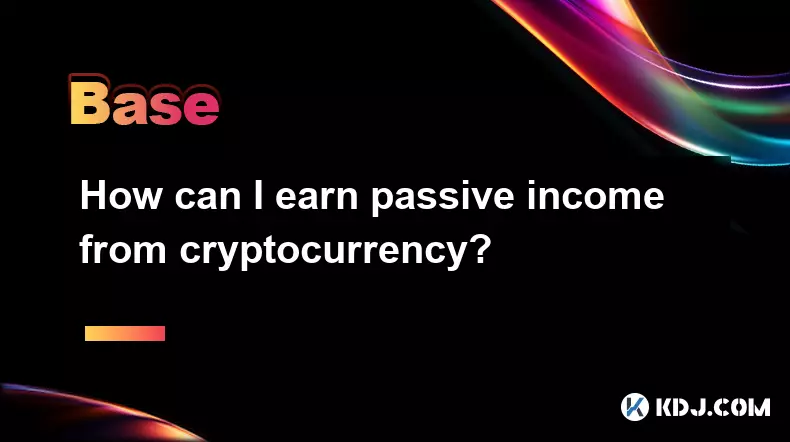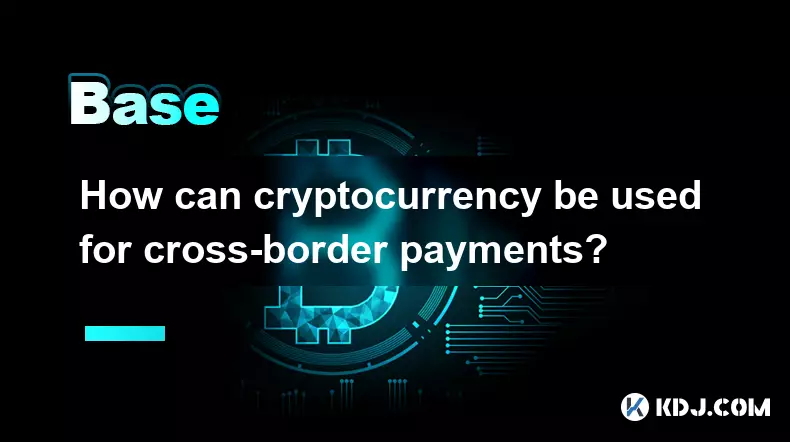-
 bitcoin
bitcoin $109547.008142 USD
0.04% -
 ethereum
ethereum $4011.838726 USD
-0.05% -
 tether
tether $1.000402 USD
-0.01% -
 xrp
xrp $2.798606 USD
0.88% -
 bnb
bnb $970.877944 USD
1.39% -
 solana
solana $202.237275 USD
-0.95% -
 usd-coin
usd-coin $0.999673 USD
0.00% -
 dogecoin
dogecoin $0.229294 USD
-1.15% -
 tron
tron $0.336370 USD
-0.45% -
 cardano
cardano $0.777260 USD
-1.66% -
 hyperliquid
hyperliquid $45.503019 USD
1.73% -
 ethena-usde
ethena-usde $1.000362 USD
0.01% -
 chainlink
chainlink $20.785303 USD
-1.10% -
 avalanche
avalanche $28.755822 USD
-0.11% -
 stellar
stellar $0.358303 USD
-0.48%
How do we understand decentralized storage in Web3?
Decentralized storage in Web3 distributes data across a network of nodes, enhancing security, censorship resistance, and user control via blockchain and encryption.
Sep 28, 2025 at 08:18 pm

What Is Decentralized Storage in Web3?
1. Decentralized storage refers to a system where data is stored across a distributed network of nodes rather than on centralized servers controlled by a single entity. This architecture aligns with the core principles of Web3, which emphasizes user ownership, transparency, and resistance to censorship.
2. Unlike traditional cloud storage providers like Amazon S3 or Google Cloud, decentralized storage solutions such as IPFS, Filecoin, and Arweave distribute files across multiple geographically dispersed nodes. Each node contributes storage space and bandwidth, creating a resilient infrastructure that does not rely on a central point of failure.
3. Data in these systems is typically broken into smaller chunks, encrypted, and replicated across various nodes. This ensures redundancy and enhances data durability even if some nodes go offline. The use of cryptographic hashing allows for content addressing, meaning files are retrieved based on their unique fingerprint rather than location-based URLs.
4. Users retain control over their private keys, which are essential for accessing and verifying stored data. This shift from permissioned access models to self-sovereign identity frameworks empowers individuals to manage their digital assets without intermediaries.
5. Because no single organization governs the entire network, decentralized storage reduces the risk of unilateral data deletion, surveillance, or service shutdowns—common concerns in centralized environments.
How Does Blockchain Enable Decentralized Storage?
1. Blockchain technology provides the foundational layer for trustless coordination among participants in a decentralized storage ecosystem. It records transactions related to file uploads, retrievals, and payments in an immutable ledger accessible to all network members.
2. In systems like Filecoin, blockchain acts as a marketplace where users pay miners (storage providers) in cryptocurrency for storing and retrieving data. Smart contracts automatically enforce agreements between clients and hosts, ensuring that payment is released only when proof-of-storage conditions are met.
3. Proof mechanisms such as Proof-of-Replication and Proof-of-Spacetime are verified on-chain, allowing the network to confirm that data is being stored reliably over time without requiring third-party audits.
4. Token incentives play a crucial role in maintaining network health. Miners are rewarded for contributing reliable storage capacity and penalized through slashing if they fail to meet uptime or availability requirements.
5. The integration of blockchain enables transparent pricing, auditability, and programmable logic for storage contracts, making it possible to build complex applications on top of decentralized infrastructure.
Use Cases of Decentralized Storage in the Crypto Ecosystem
1. NFT metadata is increasingly stored using decentralized protocols to prevent link rot and ensure long-term accessibility. When NFTs point to images or descriptions hosted on centralized servers, those assets can disappear if the server goes down. By anchoring metadata on IPFS or Arweave, creators guarantee permanence and authenticity.
2. Decentralized finance (DeFi) platforms utilize distributed storage to host front-end interfaces and critical documentation. This prevents domain seizures or takedowns that could disrupt user access during high-volatility periods.
3. DAOs (Decentralized Autonomous Organizations) store governance proposals, voting records, and treasury reports on decentralized networks to maintain transparency and immutability across jurisdictions.
4. dApps often rely on off-chain data storage solutions to reduce blockchain bloat while preserving decentralization. For example, social media platforms built on Web3 stack store user-generated content off-chain but reference it via on-chain identifiers.
5. Some privacy-focused projects combine decentralized storage with zero-knowledge proofs to enable secure, anonymous file sharing without exposing content or upload patterns to network participants.
Frequently Asked Questions
How is data privacy maintained in decentralized storage networks?Data privacy is achieved through client-side encryption before uploading. Only users possessing the decryption key can access the original content. Nodes storing encrypted fragments cannot interpret the data, preserving confidentiality across the network.
Can decentralized storage be faster than traditional cloud services?Performance varies depending on network conditions and geographic distribution. While latency may be higher in some cases due to lack of optimized CDN layers, certain implementations leverage edge caching and incentivized retrieval markets to improve speed and reliability.
What happens if a storage node goes offline permanently?Redundancy and replication strategies ensure that multiple copies of each data segment exist across different nodes. If one node disconnects, other nodes continue serving the data. Consensus algorithms detect unresponsive nodes and initiate repair processes to restore desired replication levels.
Are there costs associated with retrieving data from decentralized storage?Yes, retrieval often involves micropayments to nodes that provide bandwidth and serve requested content. These fees are typically paid in native tokens of the respective network and vary based on demand, file size, and retrieval speed requirements.
Disclaimer:info@kdj.com
The information provided is not trading advice. kdj.com does not assume any responsibility for any investments made based on the information provided in this article. Cryptocurrencies are highly volatile and it is highly recommended that you invest with caution after thorough research!
If you believe that the content used on this website infringes your copyright, please contact us immediately (info@kdj.com) and we will delete it promptly.
- BlockchainFX, Binance Coin, Cardano: Decoding the Crypto Landscape in 2025
- 2025-09-29 04:45:12
- Cathie Wood, Bitcoin, and the Future of Monetary Standards: A New York Perspective
- 2025-09-29 04:25:17
- Crypto Presales Under the Microscope: BlockDAG, HYPER, and the Hunt for the Next Big Thing
- 2025-09-29 04:25:17
- Ethereum Bulls Eye $4,000: Is the Rally Sustainable?
- 2025-09-29 05:05:14
- Aster Price Surge: Bullish Breakout or Falling Wedge Fiasco?
- 2025-09-29 04:45:12
- Aptos Price Prediction: Will the Velociraptor Upgrade Trigger a Rally?
- 2025-09-29 04:50:01
Related knowledge

What are some common methods of cryptocurrency market manipulation?
Sep 27,2025 at 02:55am
Wash Trading and Its Impact on Market Perception1. Wash trading involves an individual or entity simultaneously buying and selling the same cryptocurr...

How do I read a cryptocurrency whitepaper?
Sep 27,2025 at 05:54am
Understanding the Structure of a Cryptocurrency Whitepaper1. Begin by identifying the executive summary, which outlines the project’s core vision and ...

Can I recover lost cryptocurrency?
Sep 25,2025 at 08:18am
Understanding the Nature of Cryptocurrency Loss1. Cryptocurrency operates on decentralized networks, meaning there is no central authority to reverse ...

How do I choose a cryptocurrency investment strategy?
Sep 27,2025 at 03:55pm
Understanding Risk Tolerance in Crypto Investing1. Assessing personal risk tolerance is a foundational step when entering the cryptocurrency market. V...

How can I earn passive income from cryptocurrency?
Sep 23,2025 at 10:18am
Staking Cryptocurrencies for Regular Returns1. Many blockchain networks operate on a proof-of-stake (PoS) consensus mechanism, allowing users to earn ...

How can cryptocurrency be used for cross-border payments?
Sep 28,2025 at 01:36am
Efficiency in International Transactions1. Cryptocurrency enables near-instant settlement across borders without relying on traditional banking interm...

What are some common methods of cryptocurrency market manipulation?
Sep 27,2025 at 02:55am
Wash Trading and Its Impact on Market Perception1. Wash trading involves an individual or entity simultaneously buying and selling the same cryptocurr...

How do I read a cryptocurrency whitepaper?
Sep 27,2025 at 05:54am
Understanding the Structure of a Cryptocurrency Whitepaper1. Begin by identifying the executive summary, which outlines the project’s core vision and ...

Can I recover lost cryptocurrency?
Sep 25,2025 at 08:18am
Understanding the Nature of Cryptocurrency Loss1. Cryptocurrency operates on decentralized networks, meaning there is no central authority to reverse ...

How do I choose a cryptocurrency investment strategy?
Sep 27,2025 at 03:55pm
Understanding Risk Tolerance in Crypto Investing1. Assessing personal risk tolerance is a foundational step when entering the cryptocurrency market. V...

How can I earn passive income from cryptocurrency?
Sep 23,2025 at 10:18am
Staking Cryptocurrencies for Regular Returns1. Many blockchain networks operate on a proof-of-stake (PoS) consensus mechanism, allowing users to earn ...

How can cryptocurrency be used for cross-border payments?
Sep 28,2025 at 01:36am
Efficiency in International Transactions1. Cryptocurrency enables near-instant settlement across borders without relying on traditional banking interm...
See all articles









































































